Aspen may be known as a destination for the rich and famous but its history is rooted in the humble beginnings of a mining camp that offered the hope of a better future for those brave enough to make the arduous trek over the mountain passes. Aspen’s history is rich and its early days are emblematic of many Colorado mountain towns built on mining and the Colorado Silver boom. However unlike many, Aspen survived the lean years and flourished to become a cultural and recreational hub of the Mountain West.
The Aspen Historical Society (AHS) actively preserves and documents the history of Aspen and the surrounding area including Ashcroft, Independence, Basalt, Woody Creek, Snowmass, Snowmass Village, Redstone, Meredith, Thomasville, Marble and to a larger extent Pitkin County. The AHS works to make the collection containing more than 80,000 items, including photographs, maps, artifacts and archival materials, available online for those interested in researching and learning from the collection. This online access makes engaging in this wealth of information easy from the comfort and convenience of the home or classroom.
The AHS recently joined the Plains to Peaks Collective (PPC), the Colorado-Wyoming hub of the Digital Public Library of America (DPLA) – sharing nearly 42,000 digitized collection items. The PPC and the DPLA complement the Society’s online access initiatives by expanding the collection’s reach and building upon its audience near and far. Students, genealogists and general researchers of Colorado and the Roaring Fork Valley are able to discover the Society’s collection as well as other collections in Colorado, Wyoming and the rest of the country that are similar in subject matter – enriching their learning experience.
Situated in the Roaring Fork Valley, what is now Aspen and the immediate surrounding area was part of the ancestral home of the Ute people. In 1879, with the promise of silver and other precious minerals, Ute City, now Aspen, was established. The Ute people were forcibly removed by the federal government a few years later in part to make way for the expansion of mining in the area.
During the early years of the mining boom the small town grew slowly. In 1880 Ute City was renamed Aspen and the first newspaper, The Aspen Times, began publishing on April 23, 1881. The lack of an easy route to and from Aspen made shipping ore slow and difficult. By 1888, two railroads, the Denver & Rio Grande Railroad and the Colorado Midland, reached Aspen, allowing the mines to efficiently ship ore. The 1890 Sherman Silver Purchase Act increased the amount of silver the US government was required to buy and Aspen quickly grew in population and became the largest silver-producing district in the United States. Two short years later the federal government repealed the Act effectively ruining the economy of many mining towns.
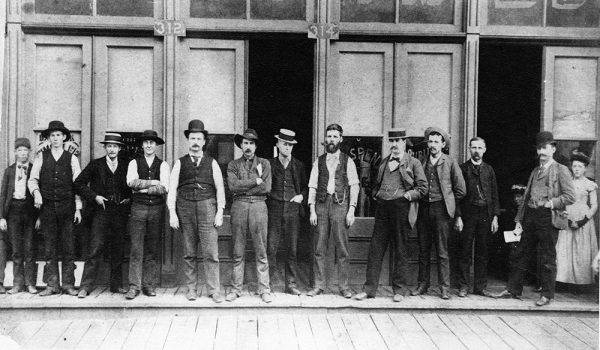
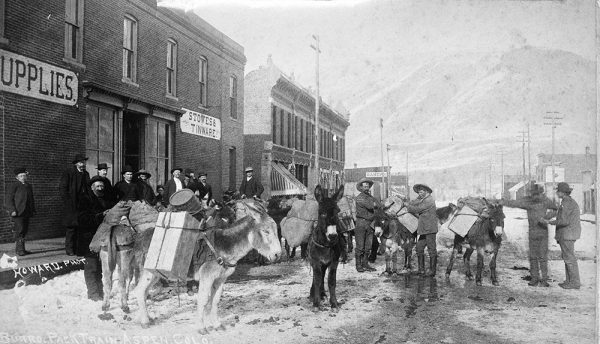
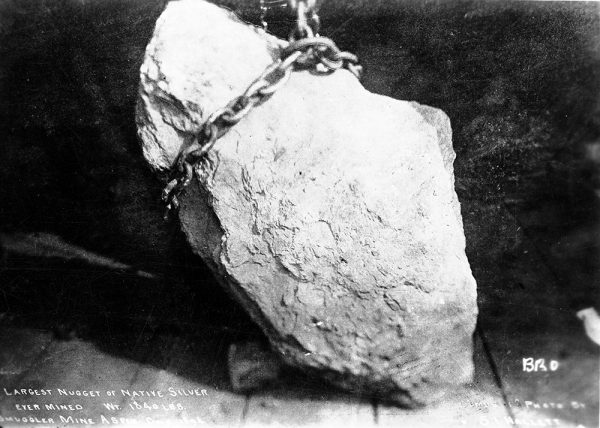
The Aspen mines struggled to stay open and many closed but the town quietly carried on and its infrastructure slowly grew. Telephone lines were brought in, water ditches were built and roads over the mountain passes were improved. Norwegian skiing was long used as a method of getting around during the winter. In December 1936, the Highland Bavarian Lodge, Aspen’s first ski lodge opened and the development of a ski hill began. A year later a six-passenger “boat tow”, powered by an old mine hoist and truck engine, was constructed at the base of Aspen Mountain and a new ski run – Roch Run – was cut on the hill.

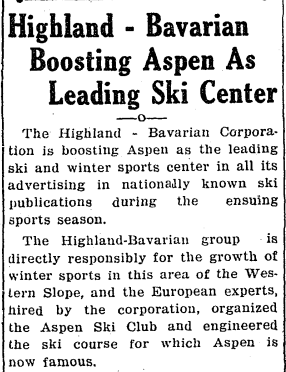
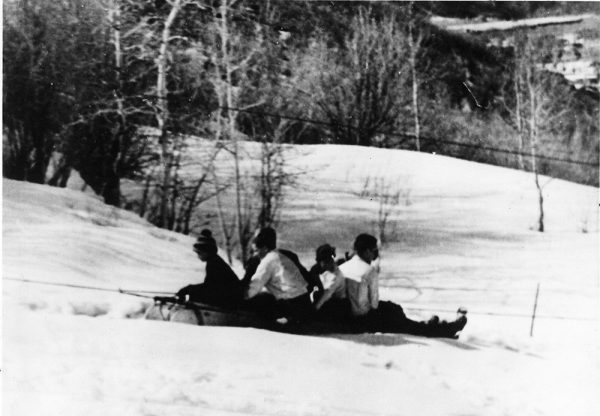
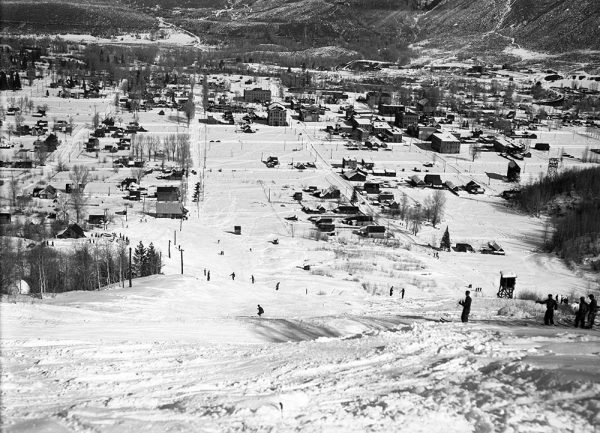
1989.045.0003.
The relatively new sport of skiing took off and the town was soon hosting world class ski events. After WWII, members of Tenth Mountain Division (soldiers on skis) returned to the area surrounding their former Camp Hale training ground. They formed ski clubs, schools and corporations and helped to further develop the Colorado ski industry. The first mechanical chairlift, Lift One, officially opened in January 1947 and additional ski runs were cut on Aspen Mountain during the following years. In 1958 a second and third ski resort, Buttermilk and Aspen Highlands, opened up for business.
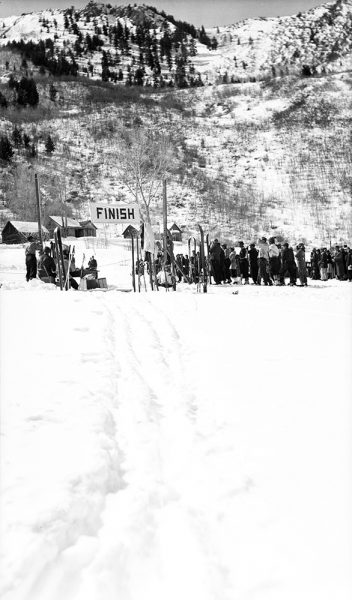
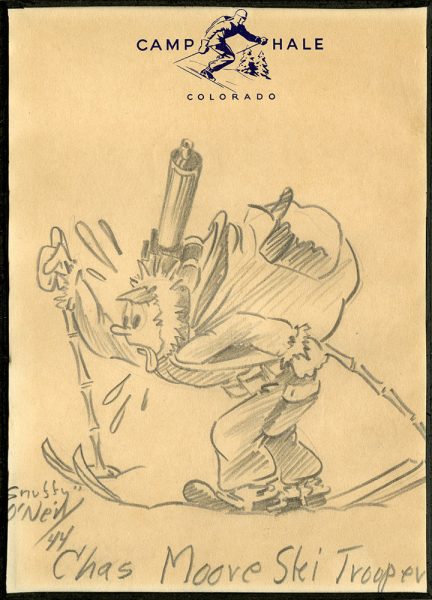
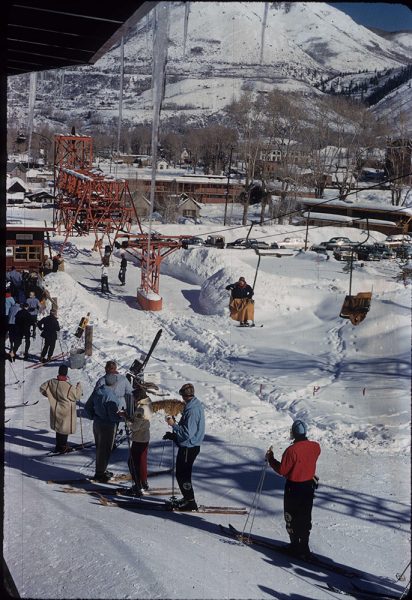
As Aspen ski industry grew, so did its art and culture industry. Chicago businessman Walter Paepcke and his wife Elizabeth helped develop the ski industry. They also felt Aspen had the potential to become a destination for intellectuals and established the Aspen Institute in 1949. The Institute’s stated aim is the realization of “a free, just, and equitable society” through learning, programs and initiatives. The Institute later included the arts by establishing the Aspen Music Festival and the International Design Conference at Aspen (IDCA). The Institute continues its international nonprofit work today with headquarters in Washington D.C. while still maintaining its original Aspen Campus.

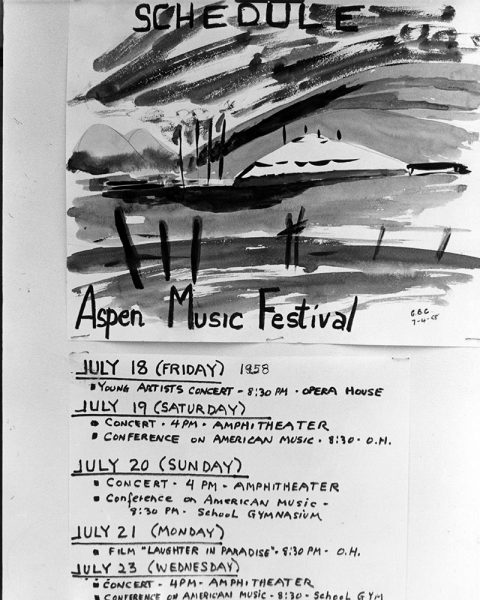
2020.053.0005.
Aspen has a long and storied history and the AHS collection documents the town’s shift from mining to a world class skiing and arts and culture destination. This article only includes a small portion of what can be discovered and learned through the vast resources the Aspen Historical Society has made available online. Happy Searching!
- It Takes a Village: New News for Weld and Pitkin Counties - June 26, 2025
- Socialism and a Denver Suburb: New Additions to CHNC - June 6, 2025
- 2025 Support for Newspaper Digitization - November 13, 2024